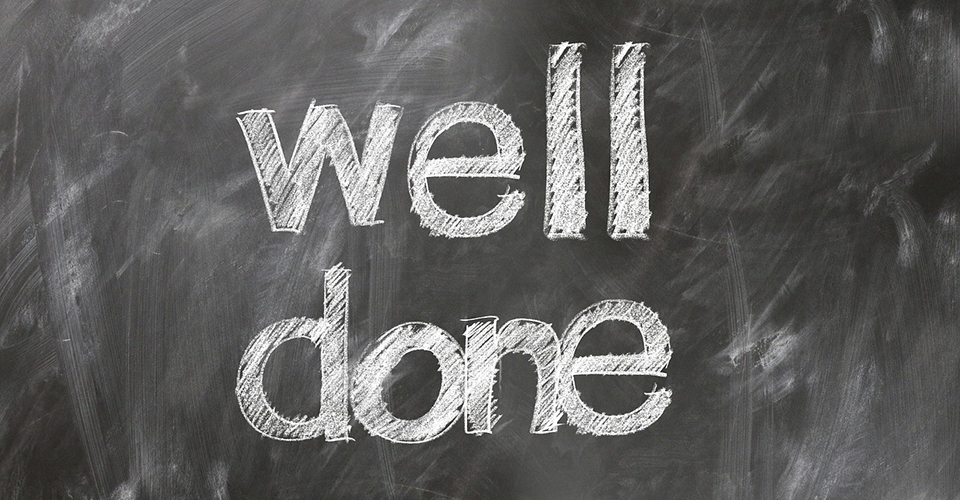
Maria do Rosário Rodrigues, Jorge Pinto & Ana Luisa de Oliveira Pires
This paper falls within the ERASMUS+ KA2 project Empowering Eportfolio Process (EEP). This project aims to promote the development of best practices in Higher Education, by encouraging cooperation and sharing between teachers and researchers from several European countries using digital portfolios. The work so far has allowed us to systematize some reflections on the students’ perspective related to the use of digital portfolios as learning and evaluation tools. Among the conclusions of the project, we highlight the opinion students have built on the role of portfolios as a transforming element of evaluation processes, giving it a character of greater integration in learning. The students suggest that evaluation should be run more frequently and should meet their needs.
This analysis was carried out by the Portuguese working group that promoted three collective interviews with students of several courses of the School of Education of the Polytechnic Institute of Setúbal (ESE-IPS). The analysis of the collected data allowed us to perceive the evaluation that the students attribute to the feedback and to the monitoring of their work by the teacher. We advocate that these aspects should be appropriated by teachers, thus promoting the quality of the process of learning and teaching in higher education.
Introduction
The project Empower Eportfolio Process (EEP) runs between 2016 and 2018 and involves teachers and researchers from five European countries: Finland, Portugal, Belgium, Ireland, and Denmark. Within this project and focused on practices of using digital portfolios as learning and evaluation tools in higher education, several components have been studied that can contribute to students becoming involved in their learning and taking responsibility for this. One of the components under analysis is the students’ own perception of several aspects of their learning. Listening to the students allowed us to understand that they highly value communication and interaction with their peers, frequent feedback, and the monitoring of the teacher to their work, as ways of promoting learning and academic success. In this paper we will focus on the analysis of higher education students’ perceptions about evaluation as an element of learning.
A look at the research on evaluation
The film “Modern Times” by Charlie Chaplin describes the industrial society where human beings functioned as if they were machines. The guiding principles of this industrialized society were also present in schools, which were “regarded as factory assembly lines for massive production of human resources” (…) “had the queues of desks, the bells ringing hourly, the subjects artificially separated, the centrally defined and inflexible curricula, the study of decontextualized topics that relied on mechanical memorization and reproduction of knowledge, isolation and competition of the school work resulted from that industrial and mechanic’s view” (Figueiredo 2016, 811).
Some of these aspects of schools have changed through time, but some remain, as in the case of exams where memorization and “knowledge” reproduction still prevail. This practice is related to a type of Assessment of Learning (AoL) where assessment comes at the end of a learning process and aims to understand whether this occurred. These kinds of assessment practices in the classroom, in general, leads to a superficial learning experience, since it encourages a “condensed” study mostly focused on memorization. However, there is another perspective of assessment, Assessment for Learning (AfL), where assessment is supposed to provide support to learning. The use of this type of assessment assumes a different perspective of teaching and learning. In this perspective, learners are the constructors of their own learning and the teacher is an organizer of contexts and tasks that promote learning experiences and a mediator between knowledge and the learner who acquires it.
Assessment practices conducted by the teacher do not solely depend on the tools used, but also on the purpose that supports assessment. If the purpose is to take stock of the learning for administration purposes (failure, certification, etc.), we are faced with assessment of learning (AoL). However, if we intend to understand what was learned for pedagogical purposes, i.e. to establish the situation of learners to help them make progress, we are faced with assessment for learning (AfL).
The problem is that AoL is compulsory (in most education systems) whereas AfL is voluntary. This poses a huge dilemma for teachers. Thus, the eportfolio, as a context and assessment tool, can become an interesting element of debate for solving the dilemma.
Portfolios can be used in multiple contexts and their design can be varied (Beckers, Dolmans, & Merriënboer 2016), but Barrett (2007) considers they are a collection of reflected, selected, and collected materials, through which assessment of competence progress is possible. Hence, they provide another assessment possibility, which goes along with learning. The assumption is that assessment is part of the learning process itself (Vygotsky 1978; Engeström 2008).
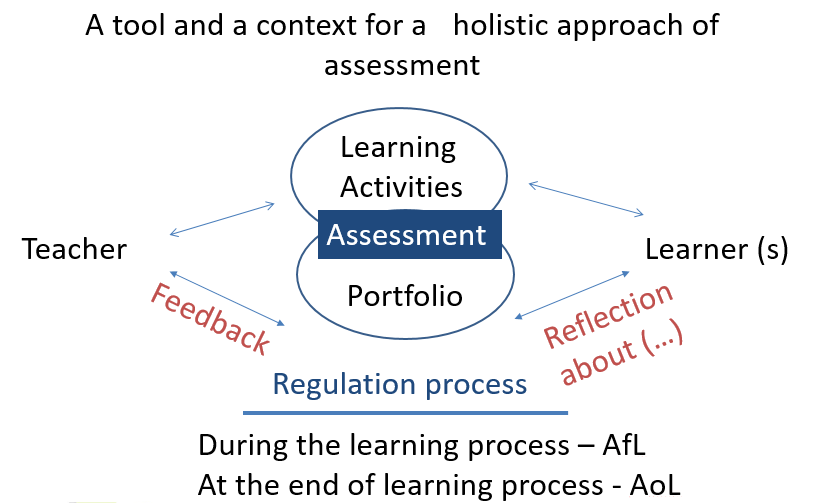
As represented in Figure 1, students collect evidence of their learning experiences along the learning and assessment process, based on previously defined criteria. After that they use reflection to build on what their choices reveal in relation to the intended outcomes. In such a context, the teacher can talk to students about their evidence and respective reflections. Oral or written feedback can then be given to students, including guiding cues to help them attain the intended outcomes. This process of regulation of learning and teaching helps keep the students on track of their learning even when some deviation occurs (William 2012). At the end of the learning cycle it is always possible to use the portfolio as a history of one’s own learning experience of deciding what the student has learned. This means that along the learning path the portfolio can be used as a learning tool and at the end as an assessment tool. This possibility of double use of the portfolio makes it significantly relevant in terms of assessment.
Digital portfolios have all the theoretical assumptions associated with portfolios on paper, but they have introduced some advantages since they enable ubiquitous access and can include multimedia elements and facilitate the transparency of personal development (Beckers, Dolmans, & Merriënboer 2016). In an increasingly technological society, these characteristics can also constitute motivational factors for students (Driessen, Muijtjens, Van Tartwijk, & Van der Vleuten 2007). In fact, digital portfolios have characteristics that can contribute to learning as they can be constructed in a way as to facilitate feedback and fit students’ likes, and they can configure their space in accordance with their work context and with their personal preferences. However, these environments can also pose challenges because they are supported by complex software. Hence, students should have digital competencies, so they can focus on the advantages for learning that digital portfolios can provide (Oakley, Pegrum, & Johnston 2014).
Brockbank and McGill (2012) highlight the importance of the teacher’s role in monitoring the students’ learning process, by seeking to identify learning problems at the outset, interacting to re-route their work or enabling them to access a higher level of knowledge. Frequency of feedback is another determining aspect. Setting deadlines and feedback throughout the semester allows students to work continuously to see if they are developing quality work (Chittum 2018).
The feedback given to a task or process of construction cannot be limited to the comment of a teacher, instead it should be a conversation where the teacher/tutor seeks to perceive the difficulties of the students and help them to perceive and overcome them.
Methodology
The studies conducted by the Portuguese team of the project EEP are qualitative in nature (Bogdan & Biklen 1994; Azevedo et al. 2010; Amado 2014). The theoretical framework has been inductively and progressively formulated, from the situations and specific characteristics of the contexts under analysis. This text is related to the identification of students’ perspectives about their own learning and assessment process, particularly in what concerns the use of digital portfolios in higher education. In this way, we tried to understand students’ experiences and perceptions about their involvement in learning and assessment processes based on digital portfolios.
The procedure used for the data collection was group interviews (Amado 2014), as this was considered the technique that best suited the nature of the information to be collected, as well as the available resources with the actual temporal constraints. The interviewees were selected based on the following criteria: have been in contact with learning and assessment strategies that made use of digital devices in the past year; and be enrolled in different courses at the ESE-IPS, so that diversity of profiles, both at undergraduate and master levels, could be ensured. Three groups of interviewees were organized amounting to thirteen students. Group 1 was composed of three students of the Social Communication course; Group 2 was composed of six students who attend the 2nd year of the Pre-School Education master’s degree; Group 3 was composed of four 1st year students of the Pre-School and 1st cycle of Basic Education Teaching master’s degree.
Interviews were conducted in the ESE-IPS and recorded on video, with the previous students’ consent. The interviews were transcribed and analyzed using a content analysis procedure, qualitative and interpretative.
At a slightly later moment, three students were suggested to make written narratives of their experiences with ePortfolios. The selection of the students was based on the same criteria as those used for the interviews, but success in the experience was also considered. Plenty of time was given to the students to reflect before they answered the questions. Their texts were also included in the above-mentioned process of content analysis.
The students’ speeches were identified by means of a code with a letter and a number. The letter identified the interview and the number corresponded to the sequence number given to each student present in that interview. As for narratives, a sequential order was adopted.
Some reflections about the collected data
During the interviews, we focussed on several aspects related to the use of digital portfolios, but those that were mostly highlighted by the students are related to the variety of products that came out and the possibility of including, as products to be evaluated, other materials in addition to traditional tests.
“(Assessment does not focus) only on one product; (we are) assessed by schoolfellow comments, by videos that we can make or reproduce and make videos for YouTube, videos that are ours… so there are a lot of products that are used for assessment; it’s nice… we don’t have to do only reflections or written texts in order to be assessed, there are a number of products that are to be evaluated… it’s positive…”
They also note the possibility for evaluators to appreciate other competencies and memory so they can take into account “our autonomy (…) and our creativity. They can also check what we found important… at the level of (?) what is being discussed” (2B), “eventually having an idea of our conceptions of that topic” (2E) and the students stress that “there are various ways of assessing us… more diversity” (2C).
They refer the portfolio as a “good tool for assessment because, there, assessment should be focused on the process, not on the outcome” (3C). This is a relevant tool since “this is what is missing in higher education, we are assessed by the outcome, by a test or a final piece of work” (3D), when we know that “actually we have best results when the subjects have many pieces of work along the year or the semester. It’s different when we have different pieces of work, even if we have a test. Grades are also better because they are distributed by several” (3C). With this tool “apparently one effectively learns something. And with others everything vanishes” (3A).
The availability of the information that is published on the ePortfolios by several students is also regarded as an encouragement to share between peers and consequently a factor for providing learning.
“Observation of the various blogs made by our mates, as well as the sharing of information and knowledge, also constituted an important landmark in our project. These practices were regular, which permitted that our blogs became increasingly rich from one week to another. <on the other hand, by doing so, we were aware of the difficulties that each of us faced. Spirit of mutual help was permanent as those who were more competent in this field immediately offered support to the others (Narrative 1).”
Master’s students point as positive the sharing that such an observation allows and consider that this should be taken into account for assessment, and they reason this way:
“We eventually have a different perspective of the work” (2F) and “for the teacher is also important to see… not only the part that they assess… what they reflect about our work, but also to reflect about what we did, what we think about what they shared, what we think, and we also see what they think… what their opinion is and…to improve” (2C). That exchange “ends up being a sharing and a reflection among all” (2D).
This portfolio organization that corresponds to assiduous shared work deliveries not only encourages the students’ work but also generates diligent feedback that supports the competencies the students develop. The teachers’ feedback is mentioned as very important, even when this does not exist. The students state a non-positive experience that occurred in another CU and that allows us to identify the relevance of having regular guidance.
“We don’t have any guidance. For example, in the first reflection we had feedback. Of course, we try to move to the second. But then we didn’t have it any more. We don’t know whether or not we are doing it right, or, when they say it, at the end they come and say “you didn’t do it right”, but… We didn’t have the appropriate support to do it right. This is, we were not told how to we should do it” (Student 3D).
These statements reveal the displeasure of the student who daily works and recognizes this effort as important to his learning but needs regular guidance as he develops his work. These statements show some disappointment on the part of the student who would like to have more support to develop more competencies.
The teacher’s work as a learning tutor, associated to feedback, is acknowledged as a motivating tool and emerges in multiple statements of the students:
“For example, my colleague and I were not able to reach it and asked the teacher for help and the teacher was there with us, at that time, trying to reach it with us. And then the thing was that we needed to put ourselves in the child’s shoes and to understand how she/he thought and then we reached it quickly (…) We need that support right there, we need the teacher to think with us. This is very important…” (Student 2C).
And they concluded their reasoning by asserting the contribution of this relationship teacher/tutor to their learning: “It ends up motivating us too because we know that we are supported there, been heard in our difficulties and questions.” (Student 2E).
The assessment element of their learning is present in the students’ statements, which show not only the search for quality of a final product but also their involvement in the process.
“The teacher sees what we comment on, what we think about our colleagues’ work, not only ours; what they think of ours (…) s/he can see what we find, what we think… we end up doing (…) an assessment… what we think about what they shared, what we think, and we also see what they think… their opinion and can improve, reflect about what we did as well.” (Student 2C).
This awareness of the students of the possibility of continuous improvement of their work based on multiple feedbacks, not only from the teacher but also from their peers, shows a willingness to progressively develop learning and competencies along the Curricular Unit.
Final remarks
The interviewed students highlighted the advantages of assessment for learning (AfL), namely when it was mentioned that the regular sharing of their productions and the corresponding feedback enables them to understand whether they are working in accordance with the teacher’s guidelines.
We also find the statements related to the sharing of deliverables among peers very interesting. The availability of group production to the whole group allowed all students to know about what their fellows were constructing, to acknowledge the value, and to integrate ideas into their own ideas, as well as to suggest improvements to their fellows whenever pertinent.
Another element recognized by students is the versatility of ePortfolio as a tool to support assessment since it can be used either in a circular and continuous production-feedback-production perspective or in the perspective of a showcase where a set of products chosen by the student, already in its final version, become public and available for assessment.

This article was produced in the Erasmus+ (KA2 action) funded project “Empowering Eportfolio Process (EEP)”. The beneficiary in the project is Häme University of Applied Sciences (FI) and the partners are VIA University College (DK), Katholieke Universiteit KU Leuven (BE), University College Leuven-Limburg (BE), Polytechnic Institute of Setúbal (PT) and Marino Institute of Education (IE). The project was implementated during 1.9.2016–30.11.2018.
Authors
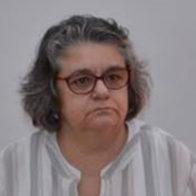
Maria do Rosário Rodrigues has a Ph.D. in Multimedia in Education. She is a teacher at the Sciences and Technologies Department of the School of Education. Her professional activity focuses on the integration of ICT in the curriculum, initial and teachers’ professional development and the design, development and evaluation of digital learning resources.
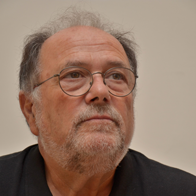
Jorge Pinto is a Coordinating Professor at the School of Education of the Polytechnic Institute of Setúbal and Co-coordinator of the master’s degree in pre-school education and primary school education and master’s degree in school administration and management. He holds a PhD in Child Studies from the University of Minho and is an integrated member of the Center for Research in Child Studies at the University of Minho.
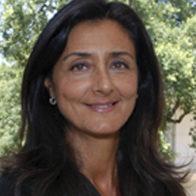
Ana Luisa de Oliveira Pires has a Ph.D. in Education. She is a teacher at the Department of Social Sciences and Pedagogy at School of Education, and researcher at UIED, New University of Lisbon. Her main area of research is Adult Learning, Lifelong learning policies, Recognition of Prior Experiential Learning, Higher Education, and Teacher Training and Development.
References
Amado, J. (2014). Manual de Investigação Qualitativa em Educação. Coimbra: Universidade de Coimbra.
Azevedo, N. A. P. R., Alves, M. G., Gonçalves, T., Nascimento, A., Couceiro, M., Neves, C., Gomes, E. X., Vieira, R., Rosa, J., & Guerrero, A. (2010). Investigar em Educação: Desafios da Construção de Conhecimento e da Formação de Investigadores num Campo Multi-referenciado. Lisboa: UIED/FCT-Universidade Nova de Lisboa. Retrieved 13 December 2018 from http://hdl.handle.net/10362/5287
Barrett, H. C. (2007). Researching Electronic Portfolios and Learner Engagement: The REFLECT Initiative. Journal of Adolescent & Adult Literacy, 50(6), 436–449. Retrieved 13 December 2018 from https://doi.org/10.1598/JAAL.50.6.2
Beaumont, C., Moscrop, C., & Canning, S. (2016). Easing the transition from school to HE: scaffolding the development of self-regulated learning through a dialogic approach to feedback. Journal of Further and Higher Education, 40(3), 331–350. Retrieved 13 December 2018 from https://doi.org/10.1080/0309877X.2014.953460
Beckers, J., Dolmans, D., & van Merriënboer, J. (2016). e-Portfolios enhancing students’ self-directed learning: A systematic review of influencing factors. Australasian Journal of Educational Technology, 32(2), 32–46. Retrieved 13 December 2018 from https://doi.org/10.14742/ajet.2528
Blumenfeld, P. C. (1996). Learning with peers: From small group cooperation to collaborative communities. Educational researcher, 25(8), 37–39.
Black, P. & Wiliam, D. (1998). Assessment and classroom learning. Assessment in Education: Principles, Policy & Practice, 5(1), 7. Retrieved 13 December 2018 from https://doi.org/10.1080/0969595980050102
Bogdan, R. & Biklen, S. (1994). Investigação qualitativa em educação. Porto: Porto Editora.
Brockbank, A. & McGill, I. (2012). Facilitating reflective learning : coaching, mentoring and supervision. Coaching, mentoring and supervision (2nd ed.). London: KoganPage.
Chittum, J. (2018). The Theory-to-Practice ePortfolio: An Assignment to Facilitate Motivation and Higher Order Thinking. International Journal of EPortfolio, 8(1), 27–42.
Driessen, E. W., Muijtjens, A. M. M., van Tartwijk, J., & van der Vleuten, C. P. M. (2007). Web- or paper-based portfolios: is there a difference? Medical Education, 41(11), 1067–1073. Retrieved from https://doi.org/10.1111/j.1365-2923.2007.02859.x
Engeström, Y. (2008). From Teams to Knots. Activity-Theoretical Studies of Collaboration and Learning at Work. Cambridge: Cambridge University Press. Retrieved 13 December 2018 from https://doi.org/10.1017/CBO9780511619847
Figueiredo, A. D. (2016). A pedagogia dos contextos de aprendizagem. E-Curriculum, 14(3), 809–836. Retrieved 13 December 2018 from http://www.redalyc.org/pdf/766/76647706004.pdf
Oakley, G., Pegrum, M., & Johnston, S. (2014). Introducing e-portfolios to pre-service teachers as tools for reflection and growth: lessons learnt. Asia-Pacific Journal of Teacher Education, 42(1), 36-50. Retrieved 13 December 2018 from https://doi.org/10.1080/1359866X.2013.854860
Orsmond, P., Maw, S. J., Park, J. R., Gomez, S., & Crook, A. C. (2013). Moving feedback forward: theory to practice. Assessment & Evaluation in Higher Education, 38(2), 240–252. Retrieved 13 December 2018 from https://doi.org/10.1080/02602938.2011.625472
Põldoja, H., Duval, E., & Leinonen, T. (2016). Design and evaluation of an online tool for open learning with blogs. Australasian Journal of Educational Technology, 32(2), 64–81.
Vygotsky, L. S. (1978). Mind in society: The development of higher psychological processes. Harvard: Harvard University Press.
William, D. (2012). Feedback: a part of system. Educational Leadership, 70(1), 30–34.





